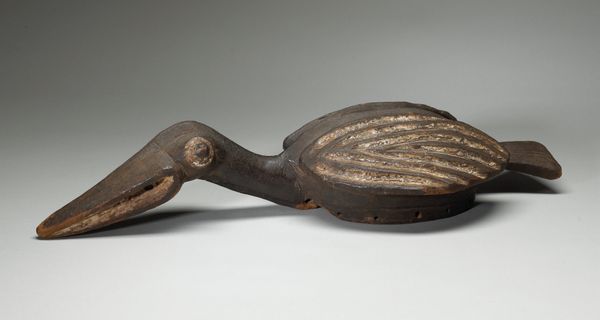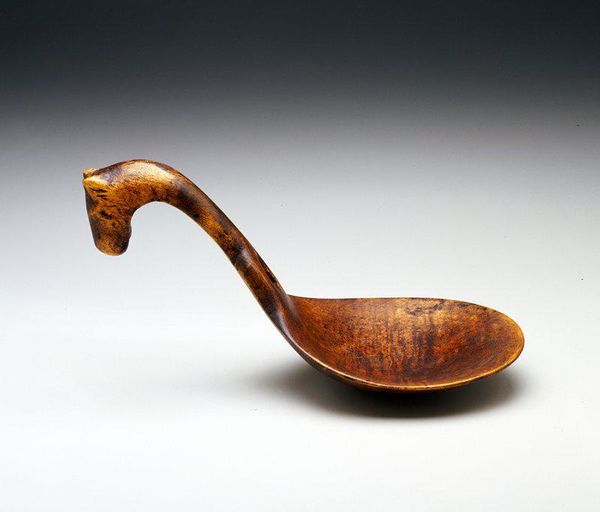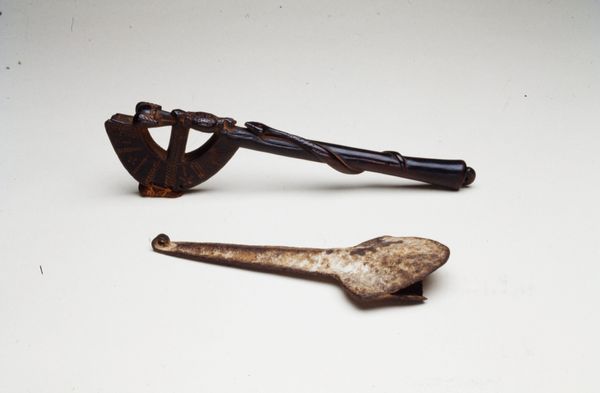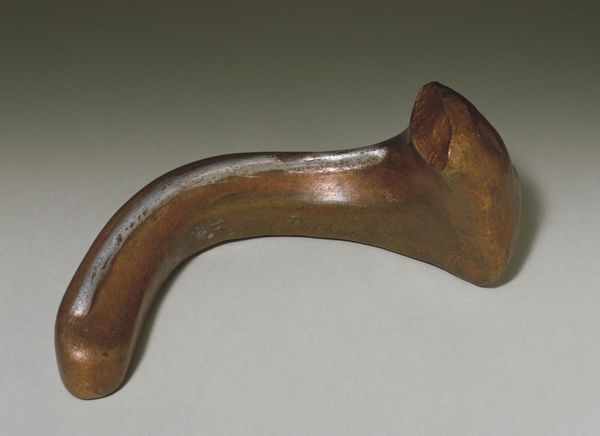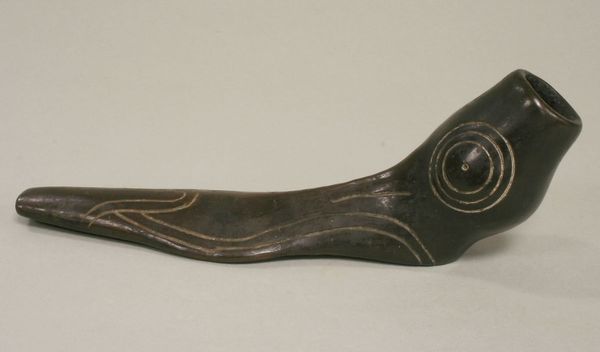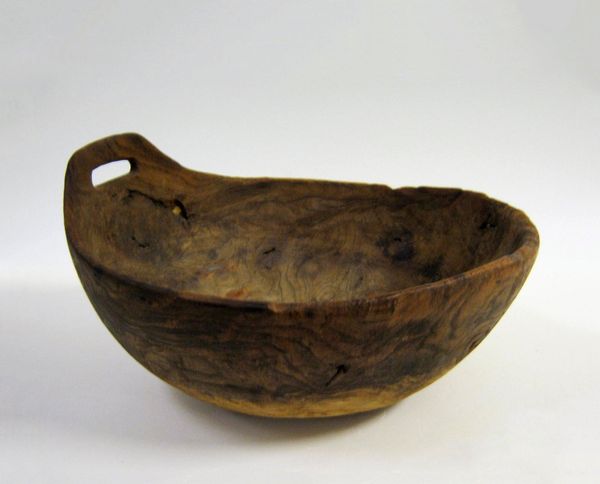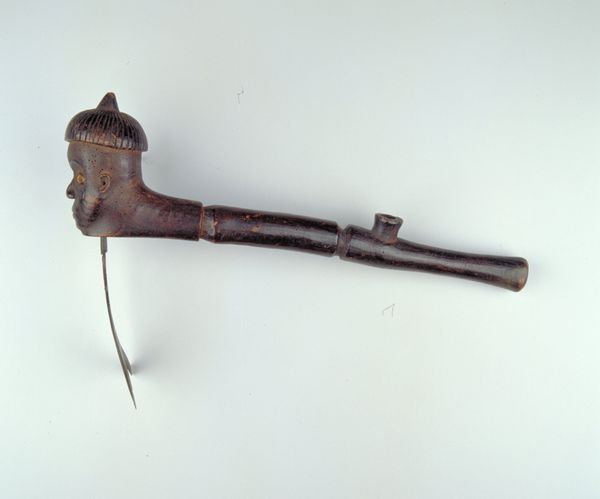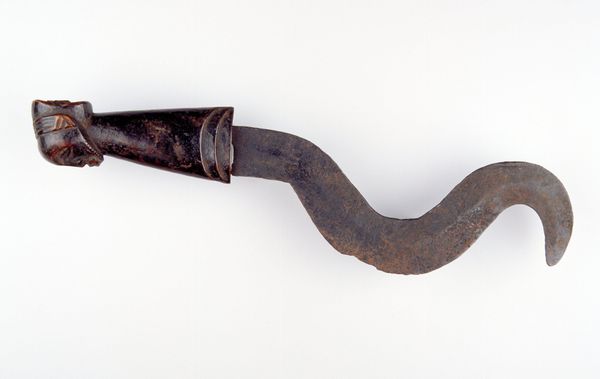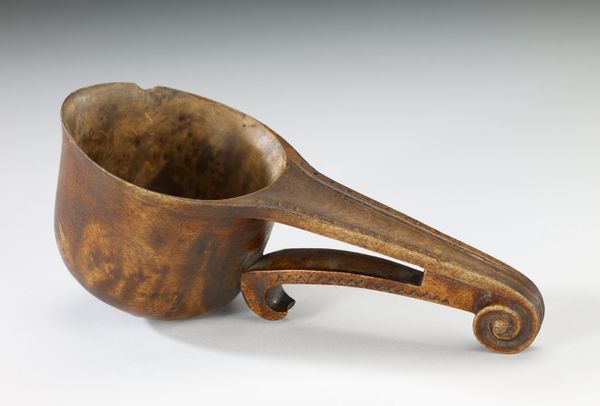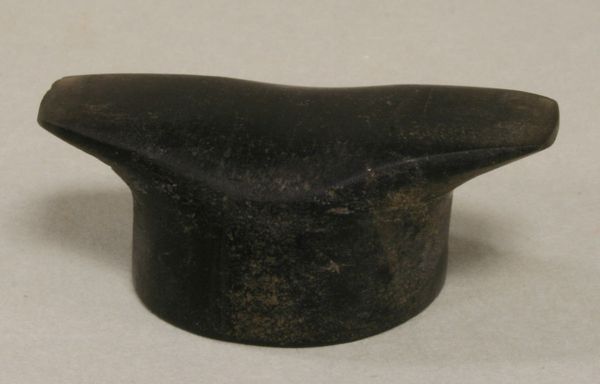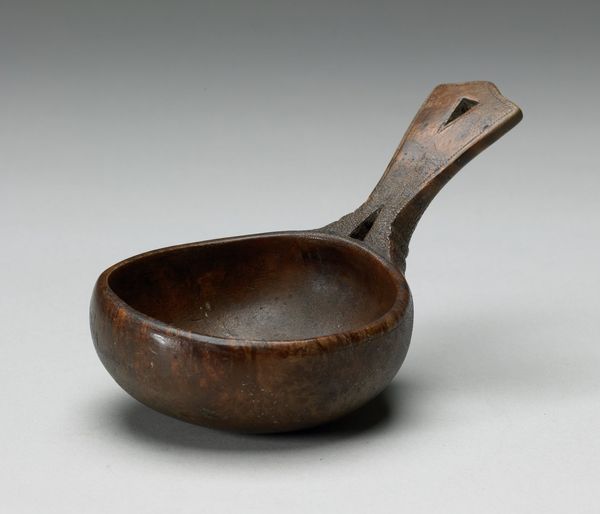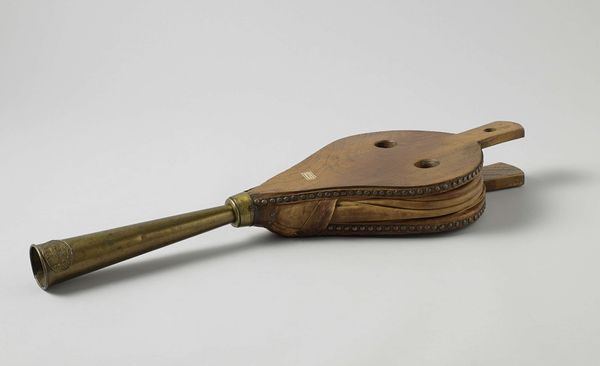
carving, sculpture, wood
#
carving
#
charcoal drawing
#
sculptural image
#
folk-art
#
sculpture
#
wood
#
charcoal
Dimensions: 7-1/4 x 5-9/16 x 9-7/16 in. (18.4 x 14.1 x 24.0 cm)
Copyright: Public Domain
Editor: We're looking at a "Ladle" from an unknown date, found at the Minneapolis Institute of Art. It's carved from wood. I'm immediately struck by how tactile it seems, and the rough finish gives it a very grounded feeling. What do you see when you examine it? Curator: Indeed, the tactile quality is primary. Consider the form itself. We have two distinct volumes: the bowl and the handle, joined in a sweeping, sinuous curve. Note how the wood grain emphasizes this curve, lending it a sense of organic growth. Are we looking at something functional, or something merely evocative of function? Editor: That’s interesting. I hadn't considered that it might be more about form than function. But looking closely, I see the bowl is quite shallow and the wood appears rather rough. Would it actually be used for serving? Curator: Perhaps, or perhaps not. Semiotically, the object signifies ‘ladle,’ but its physical attributes undermine pure utility. It plays on our expectations. Look at the tool marks; they haven't been erased. They reveal the artist's process. How does that layering of meaning impact your interpretation? Editor: It makes me appreciate the skill involved, but also the artist's conscious decision to leave those marks visible. It's a statement about the handmade, about process as part of the art. It feels authentic somehow. Curator: Precisely. And how might that intentionality speak to a broader cultural context regarding folk art versus formally trained artistry, for example? Editor: I think it challenges the idea that only refined, polished techniques are valuable, instead celebrating the beauty and honesty of the handmade. It makes me rethink the hierarchy between craft and art. Curator: A worthy consideration indeed. This analysis highlights how form, texture, and the artist's touch all contribute to this object's power, transcending mere utility.
Comments
No comments
Be the first to comment and join the conversation on the ultimate creative platform.
